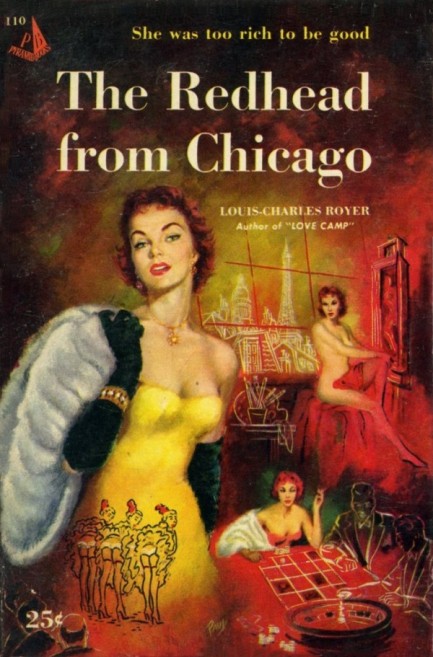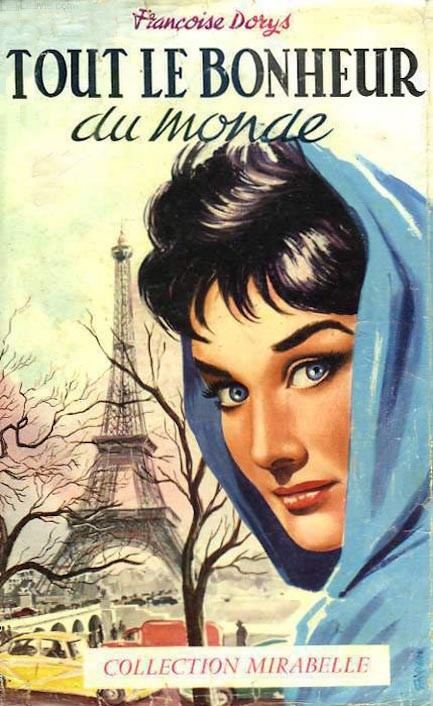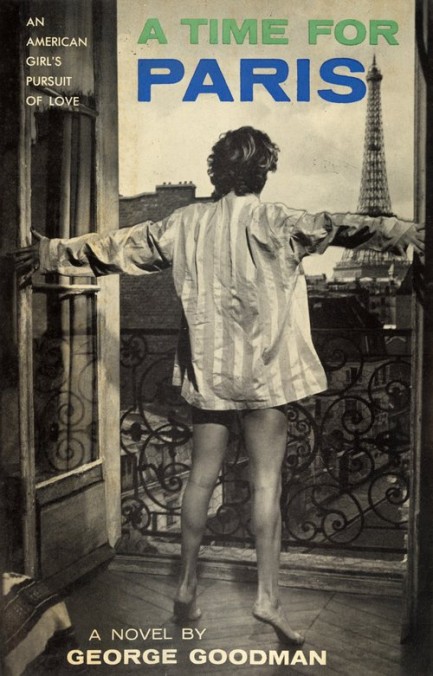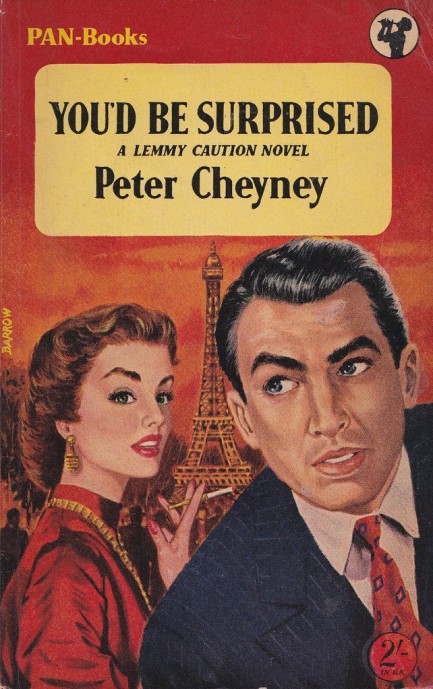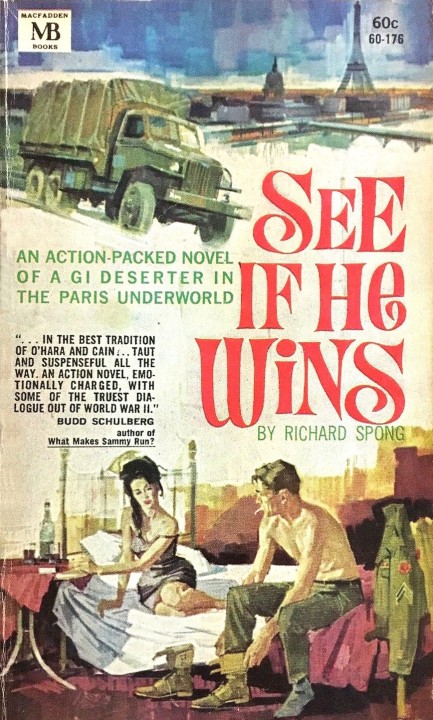 Relax, honey. They must be from that boat with the skull flag. I bet they're spring breakers on a booze cruise. 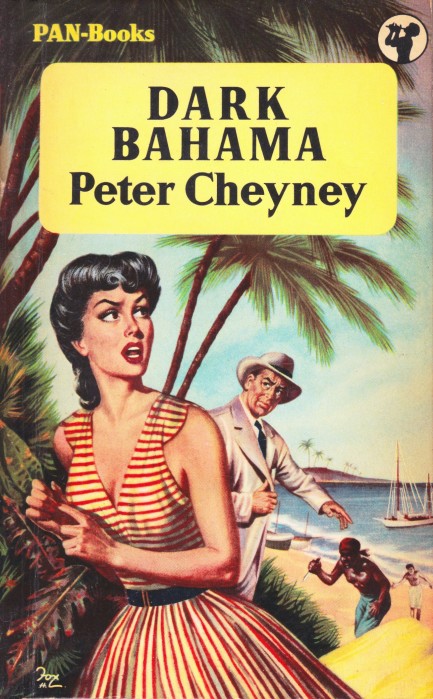
The 1960 Fontana edition of Peter Cheyney's Dark Bahama, with its unlucky man being mauled by a shark, is one of the craziest mid-century paperback covers you'll see. By contrast, the earlier 1957 edition above from Pan Books goes a bit more traditional. It was painted by Henry Fox, easily recognizable thanks to his unique signature at lower left. The book is unique too. Feel free to read the earlier write-up to find out how.
 Well, well. I never really believed the stories, yet here you are in the flesh—the fifty foot woman. 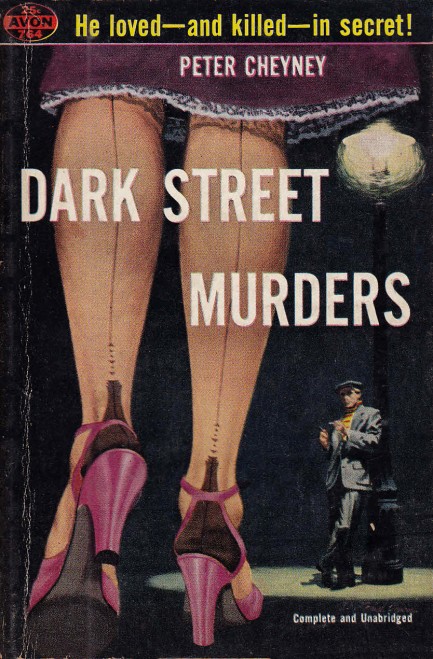
Above: interesting perspective and wonderful execution from artist Fred Irvin for Avon Publications' 1957 paperback edition of Peter Cheyney's 1944 novel Dark Street Murders, aka The Dark Street. Other sites have this cover as unattributed, but we're sure it's Irvin. His signature is dim, but visible. We grabbed one from another piece of his for confirmation.
 
 This art is both a Sym-ulation and the real deal. 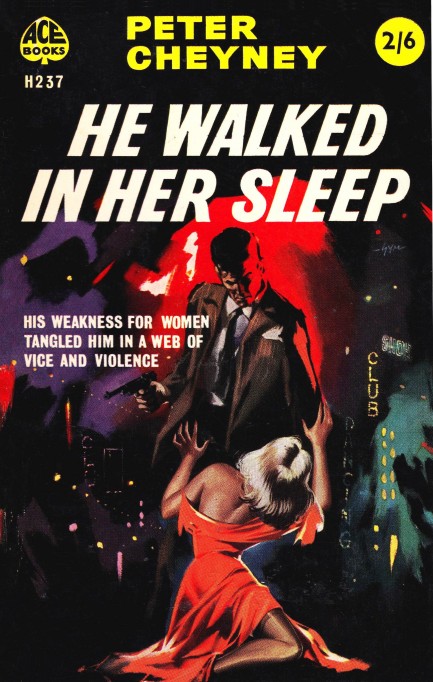
Italian illustrator Sandro Symeoni signed this 1959 Ace Books cover for Peter Cheyney's He Walked in her Sleep just “Sym,” but however he marks his work, we'd know it at first glance. For years we thought he was a movie poster and record sleeve artist only, then we suddenly started finding his paperback covers. All are brilliant. Oh, and speaking of brilliant, this is an awesome title for a thriller. It was originally published in 1946 as part of the Cheyney collection He Walked in Her Sleep and Other Stories, but Ace got hold of it and typeset it to novel length. More from Cheyney and Syemoni soon.
 Tropical storm conditions combine with shark migration to form deadly sharkicane 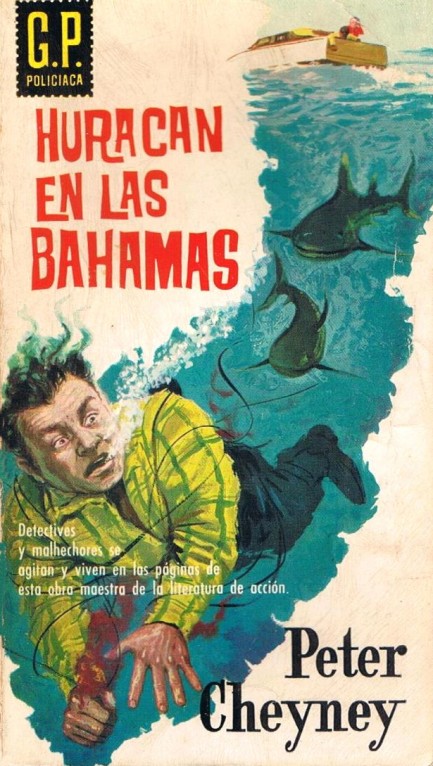 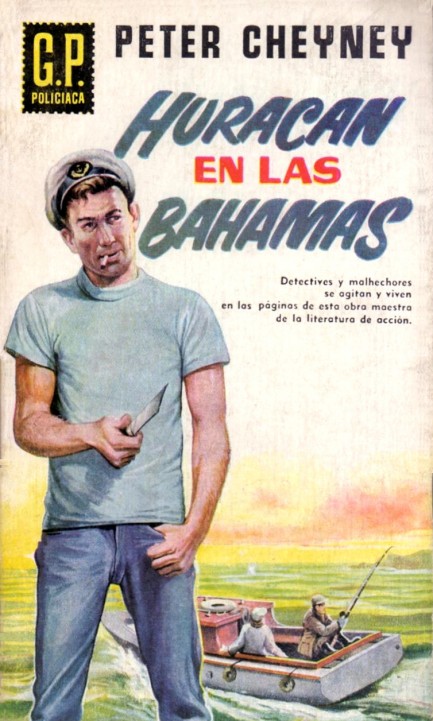
We're circling back to Peter Cheyney's novel Dark Bahama to show you a couple of Spanish covers from Ediciones G.P. These came in 1953 and 1958 respectively and are, sadly, uncredited. And the bad news keeps coming—there's no hurricane in the novel, therefore no sharkicane. Sorry. You can read about the book here.
 Turns out sharks like the catch of the day too. 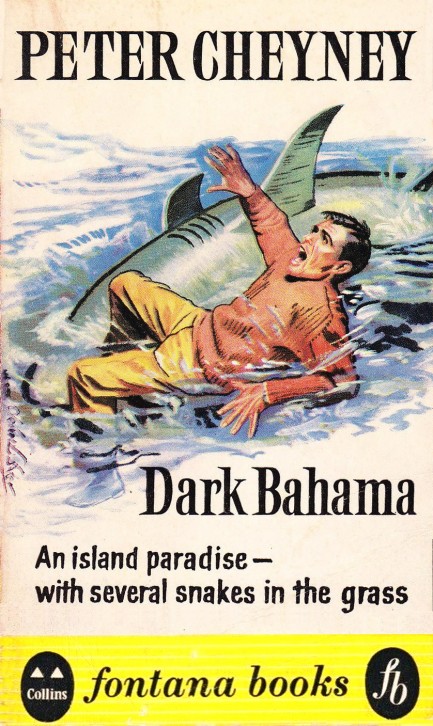
As soon as we saw this cover for Peter Cheyney's 1950 novel Dark Bahama we had to read the book. We had to find out if this was a literal illustration. And yep, a guy gets eaten by a shark. The artist here, John L. Baker, painting this for Fontana's 1960 edition, must have really enjoyed creating something different from the usual gun toting studs and chain smoking femmes fatales. The story is different too. In a tale set on the fictional Bahamian island of Dark Bahama, Cheyney creates an array of Afro-Bahamian characters, filling roles from fishermen to police officials, and, surprisingly, writes them with something nearing respect. The addition of a mysterious Belgian character makes for another fun spot of diversity.
The protagonist is Julian Isles, a British detective hired to locate a globetrotting ingenue and rescue her from Dark Bahama before her partying and dubious associations permanently embarrass her family. Isles immediately walks into a murder scene, is suspected by the local cops, begins to think his client has lied to him, and sets about defying orders and expectations to get to the bottom of it all. Getting to the bottom involves working with the aforementioned Belgian cipher, Ernest Guelvada, a tough, romantic, eloquent, and ruthless operative of vague provenance. We think he's one of the best characters we've come across in mid-century literature. Just listen to this guy:
“I am delighted to meet you. I am more than delighted to bring a little excitement into your—what is the word—prosaic existence. Yes, goddam it, you will agree with me that there is nothing like a couple of murders to stir the blood of a police commissioner at three-thirty in the morning.”
And:
“You think so? You lie. More than that, my friend, you love her. That I know. When you speak of her I see the look in your eye. I have discovered your secret. I will tell you something else. I also love her. I, Guelvada, who loves every woman in the world, love her at least as much as the other few million.”
And:
“When I go into action, my friend, I like a lot of room and a lot of space. Like great armies I must have room to develop. Like great fleets I must have space to maneuver. You understand? It is for this reason that I do not wish this island to be cluttered up with non-essential women, and at the moment our beautiful Miss Lyon is non-essential. Therefore, she will stay in Miami.”
To us, that sounds like a writer having a very good time with an off-the-wall character. Guelvada's reasons for turning up change Dark Bahama from a mystery to an espionage tale, but we won't reveal the details. We suggest reading it yourself. Cheyney is famous for his Lemmy Caution series, which began back in 1935, but we think he's better here fifteen years later—a better stylist and a better conceptualizer, who's produced a generally better read than we think he was capable of back when he started out. The story is engaging, the femme fatale is fascinating, the secondary characters ring true, the bizarre Ernest Guelvada keeps reader interest high, and the island backdrop adds atmosphere and spice. With Dark Bahama Cheyney gave us more than our money's worth.
 Paperback publishers get it up in Paris.
Below, seven more examples of vintage paperbacks using the Eiffel Tower on their covers. You can add these to the collection of twenty-two we put together a few years back.
 1957 crime farce offers Slim pickings—at least until Dominique Wilms comes along. 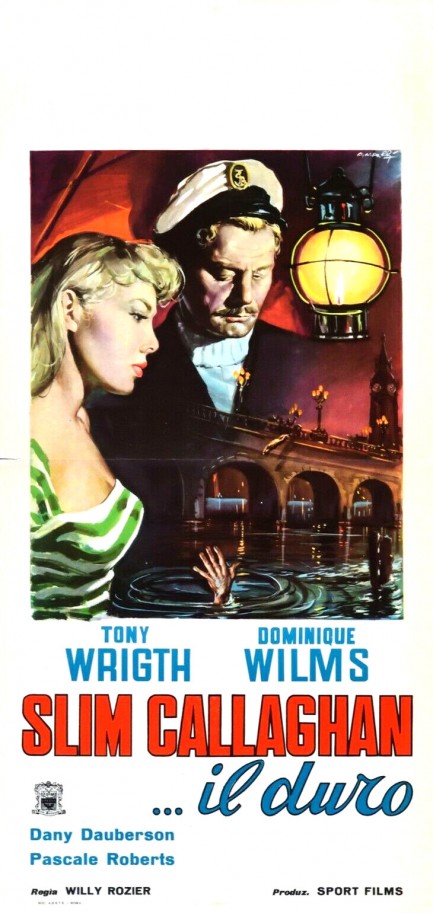
We were busy little beavers last night. We watched a second vintage drama. At least, we thought it was a drama. Above you see an Italian poster for Slim Callaghan... il duro, which was originally made in France as Et par ici la sortie. It had no English title since it never had an English language release, but it was adapted from a novel by British author Peter Cheyney, who made a career of imitating American hard boiled detective novels. As many reviews of his fiction note, the vernacular was tricky for a guy who'd spent little if any time Stateside, making for some clunky prose at times.
When you watch Et par ici la sortie, it's clear that French filmmaker Willy Rozier picked up on the quirkiness of Cheyney's writing and decided to inject heavy doses of comedy into his film version. Thus in addition to gunplay there's a cream pie fight, a slapfest of attrition between Dany Dauberson and Pascale Roberts, a comedic brawl on a passenger airliner that almost results in a crash, and another brawl features that hoary vaudeville classic—seltzer water sprayed in the face. Much of this is hilarious, though not in the way Rozier and Co. intended—you'll laugh out of amazement.
The plot involves a Scotland Yard detective who is the virtual double of a criminal arms dealer, and decides he can infiltrate and bust the arms gang by relying upon this resemblance. But the arms dealer likewise realizes the resemblance and embarks on his own scheme to take advantage. Sounds positively scintillating, doesn't it? Erm... maybe not. But the movie isn't a total loss. Dominique Wilms gets a co-starring role here as the femme fatale Myrna de Maripasula. Think she isn't reason enough to watch? Think again. Et par ici la sortie premiered in France today in 1957. 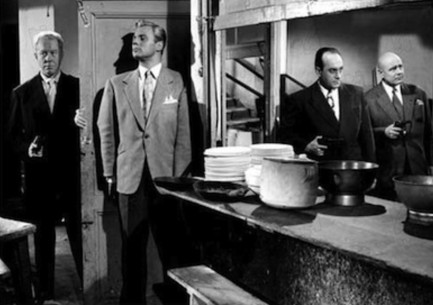 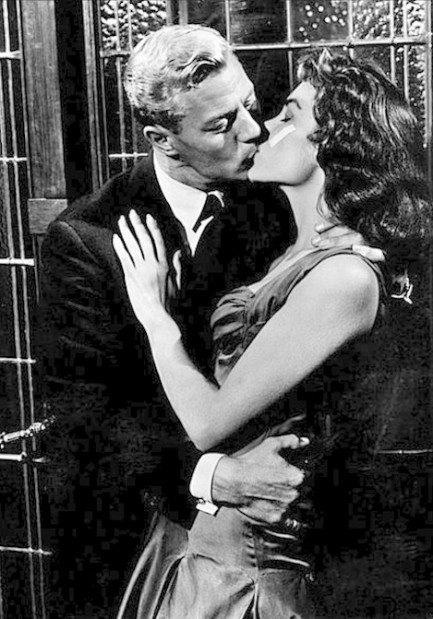  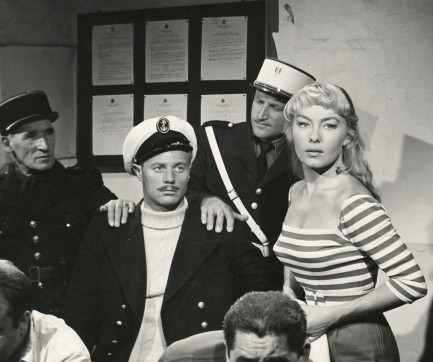 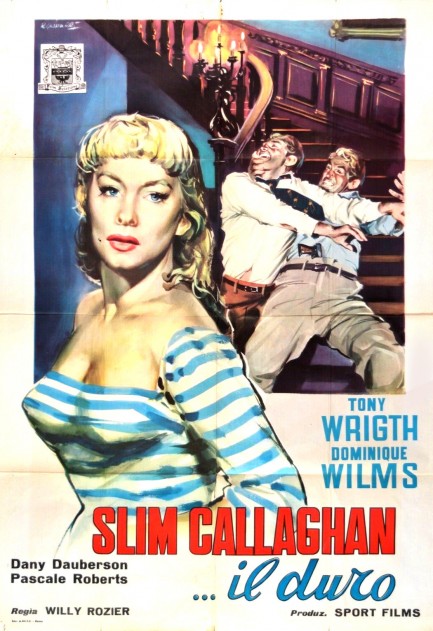
 Lemmy put it to you as directly as possible. 
Peter Cheyney debuted as a novelist in 1936 with the Lemmy Caution novel This Man Is Dangerous, and true to the title, his franchise character is one bad mutha-shut-your-mouth. We like the scene where he leg locks a guy around the neck, then proceeds to lecture him for two pages about how he's going to kill him and enjoy it, before actually breaking his neck. The crux of the story involves a plot to kidnap an heiress in London. Cheyney details Caution's wanderings around the dark recesses of the Brit underworld and slings the slang like few writers from the period. Much of it is amusing, though he never quite makes it to the level of “moo juice.” But here's the thing about loads of slang in vintage literature—it can wear on you after a while. And when paired with a storyline that doesn't exactly sprint like Usain Bolt, it can really wear on you. You have to give Cheyney credit, though. He was unique. And successful. This Man Is Dangerous was adapted to the screen as the French film Cet homme est dangereux in 1956, and numerous other novels of his made it to the moviehouse as well. We weren't thrilled with this tale, but it's significant in the crime genre, and objectively we think many readers will love it. The Fontana edition you see above has amazing cover art by John Rose and was published in 1954.
 The FBI stretches its jurisdiction all the way to Morocco in 1953 thriller. 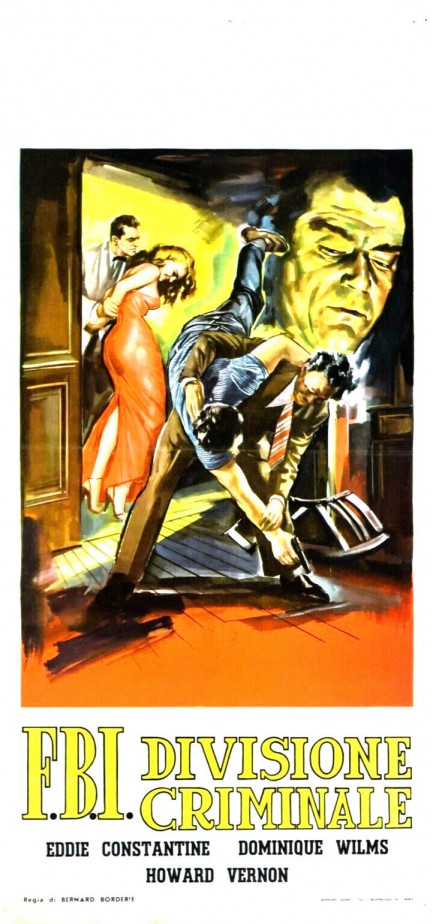 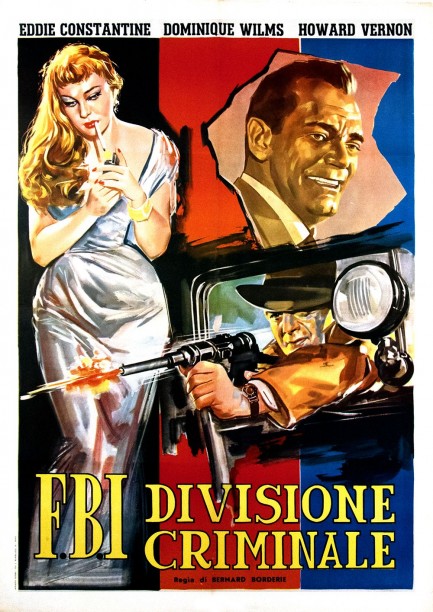
Above, two beautiful Italian posters for F.B.I. divisione criminale, originally titled La môme vert de gris, but known in the U.S. as Poison Ivy. The film was based on a Peter Cheyney novel also named Poison Ivy, and starred Eddie Constantine as an American G-man in Morocco, and Dominique Wilms as a femme fatale known as—you guessed it—Poison Ivy. We talked about the movie at length in May, so if you're curious have a look here.
 French crime drama throws Caution to the wind. 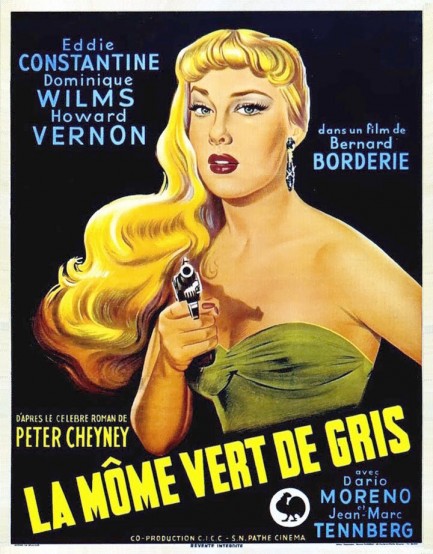 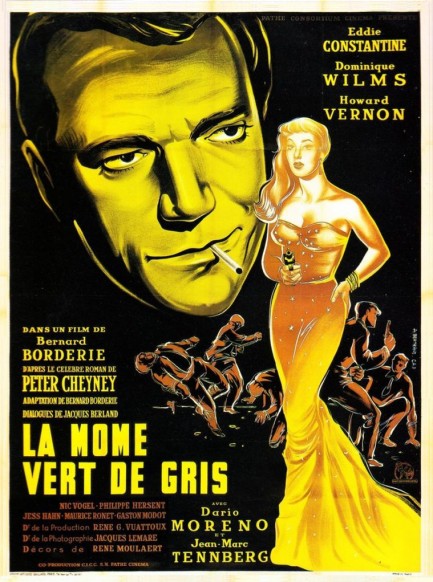
Here you see two posters for the 1953 French crime drama La môme vert de gris, which was called Poison Ivy in the U.S. This was adapted from a 1937 novel by Peter Cheyney that featured his recurring character FBI agent Lemmy Caution, who onscreen is played by Eddie Constantine. When two million dollars worth of gold goes missing Constantine is sent to Casablanca to determine its disposition and identify all malefactors involved. He finds himself pitted against a criminal mastermind of sorts, and a hive of henchmen that occupy a nightclub, a yacht, and a hideout in Casablanca's old quarter. Constantine deals with all comers by applying the time-honored advice: when in doubt, punch them out.
Film buffs the world over associate Casablanca with the Humphrey Bogart film of the same name, but the city you see here is different from the one made famous by Bogart and Co. ten years earlier. The Casablanca of this film is a maze of L.A.-style roads, white skyscrapers, and an industrial port the size of Long Beach. We checked population figures and learned it was already a major city of more than 500,000 people during the early 1940s, which means that Casablanca's village feel is really just a clever cinematic fantasy. Poison Ivy's Casablanca is real, and the many location shots mixed into the movie prove it.
That's Dominique Wilms on the top poster, and she's the reason we watched the movie. In this, her cinematic debut, she plays a femme fatale named Carlotta de la Rue, which of course indicates that she's a woman from the street. If that isn't enough to warn the men away, her friends call her Poison Ivy. Why? Because she burns. Hopefully that's meant figuratively, and above the waist. A character bringing so much heat must of course perform a torch song, which she sings with detachment, while the lyrics—as they usually do—indicate deeper issues: “I wander with my sorrow, along with my memories, looking for my old joys, which I've seen fade and die.” See? She just wants to be loved, assuming a man isn't thwarted by her acid tongue, that ironic right eyebrow, and the barbed wire encircling her heart.
The movie is certainly watchable, though it's nothing special aside from its exotic setting. But you have to appreciate the French love for U.S. crime fiction. In fact, director Bernard Borderie got the band back together and cast Constantine, Wilms, and her prehensile eyebrow in the next Caution movie, 1954's Les femmes s'en balancent. Constantine and Wilms also co-starred in 1957's Le grand bluff, another Caution adaptation, but helmed by Patrice Dally. Constantine went on to make Caution the signature character of his career. Wilms, who at age ninety is still out there somewhere, had about a dozen more roles before leaving cinema behind, but we think she had “it,” and will definitely check out some of her other work. 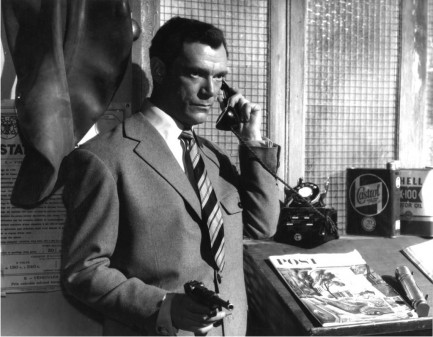 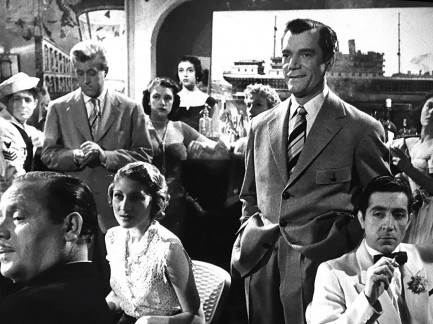  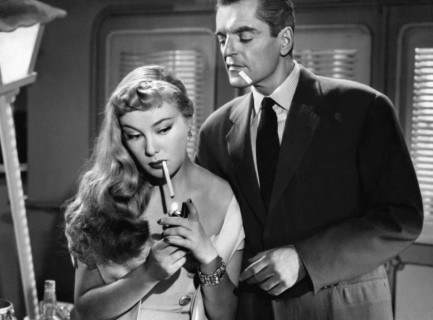 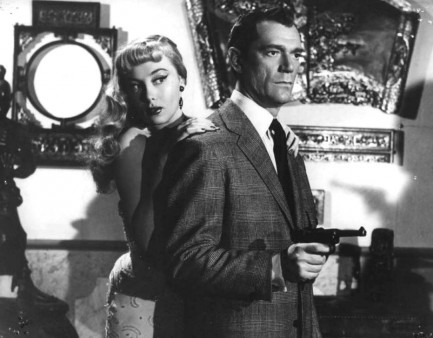 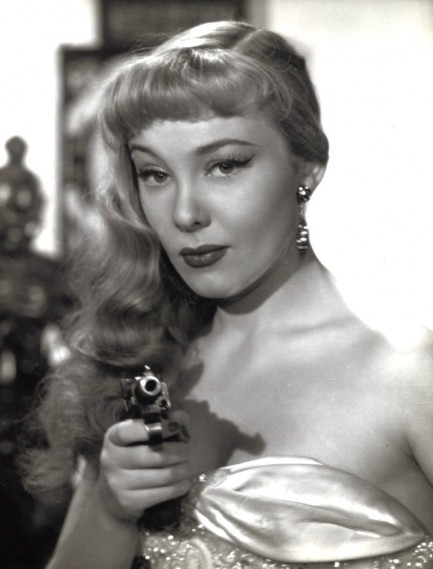 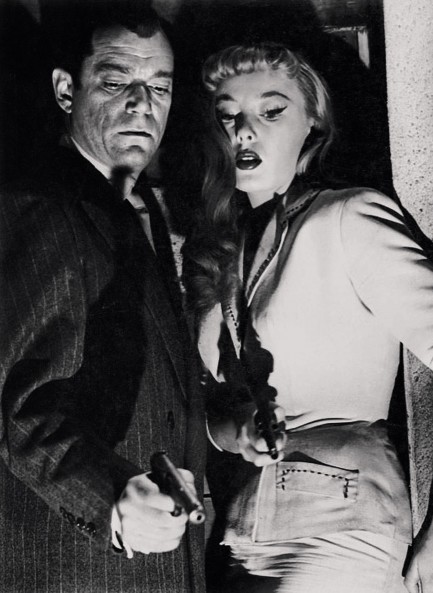 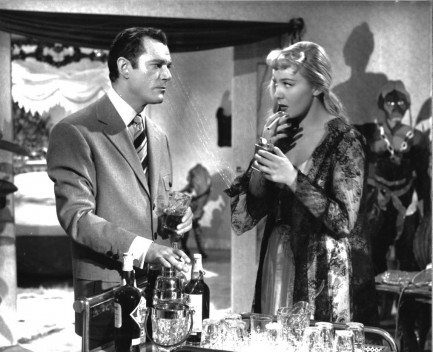 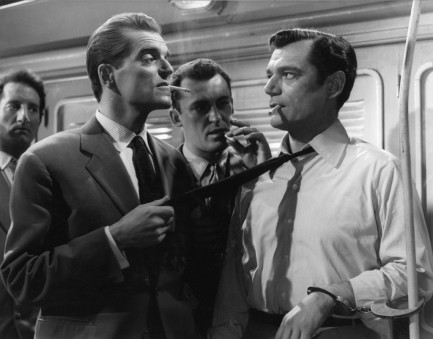 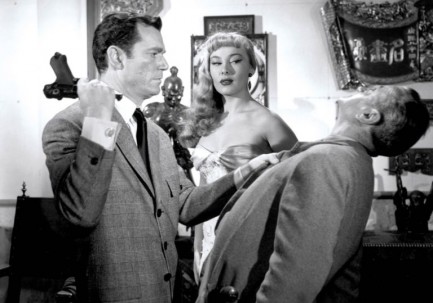 

|
 |

The headlines that mattered yesteryear.
1945—Churchill Given the Sack
In spite of admiring Winston Churchill as a great wartime leader, Britons elect
Clement Attlee the nation's new prime minister in a sweeping victory for the Labour Party over the Conservatives. 1952—Evita Peron Dies
Eva Duarte de Peron, aka Evita, wife of the president of the Argentine Republic, dies from cancer at age 33. Evita had brought the working classes into a position of political power never witnessed before, but was hated by the nation's powerful military class. She is lain to rest in Milan, Italy in a secret grave under a nun's name, but is eventually returned to Argentina for reburial beside her husband in 1974. 1943—Mussolini Calls It Quits
Italian dictator Benito Mussolini steps down as head of the armed forces and the government. It soon becomes clear that Il Duce did not relinquish power voluntarily, but was forced to resign after former Fascist colleagues turned against him. He is later installed by Germany as leader of the Italian Social Republic in the north of the country, but is killed by partisans in 1945. 1915—Ship Capsizes on Lake Michigan
During an outing arranged by Western Electric Co. for its employees and their families, the passenger ship Eastland capsizes in Lake Michigan due to unequal weight distribution. 844 people die, including all the members of 22 different families. 1980—Peter Sellers Dies
British movie star Peter Sellers, whose roles in Dr. Strangelove, Being There and the Pink Panther films established him as the greatest comedic actor of his generation, dies of a heart attack at age fifty-four.
|

|
|

It's easy. We have an uploader that makes it a snap. Use it to submit your art, text, header, and subhead. Your post can be funny, serious, or anything in between, as long as it's vintage pulp. You'll get a byline and experience the fleeting pride of free authorship. We'll edit your post for typos, but the rest is up to you. Click here to give us your best shot.

|
|















